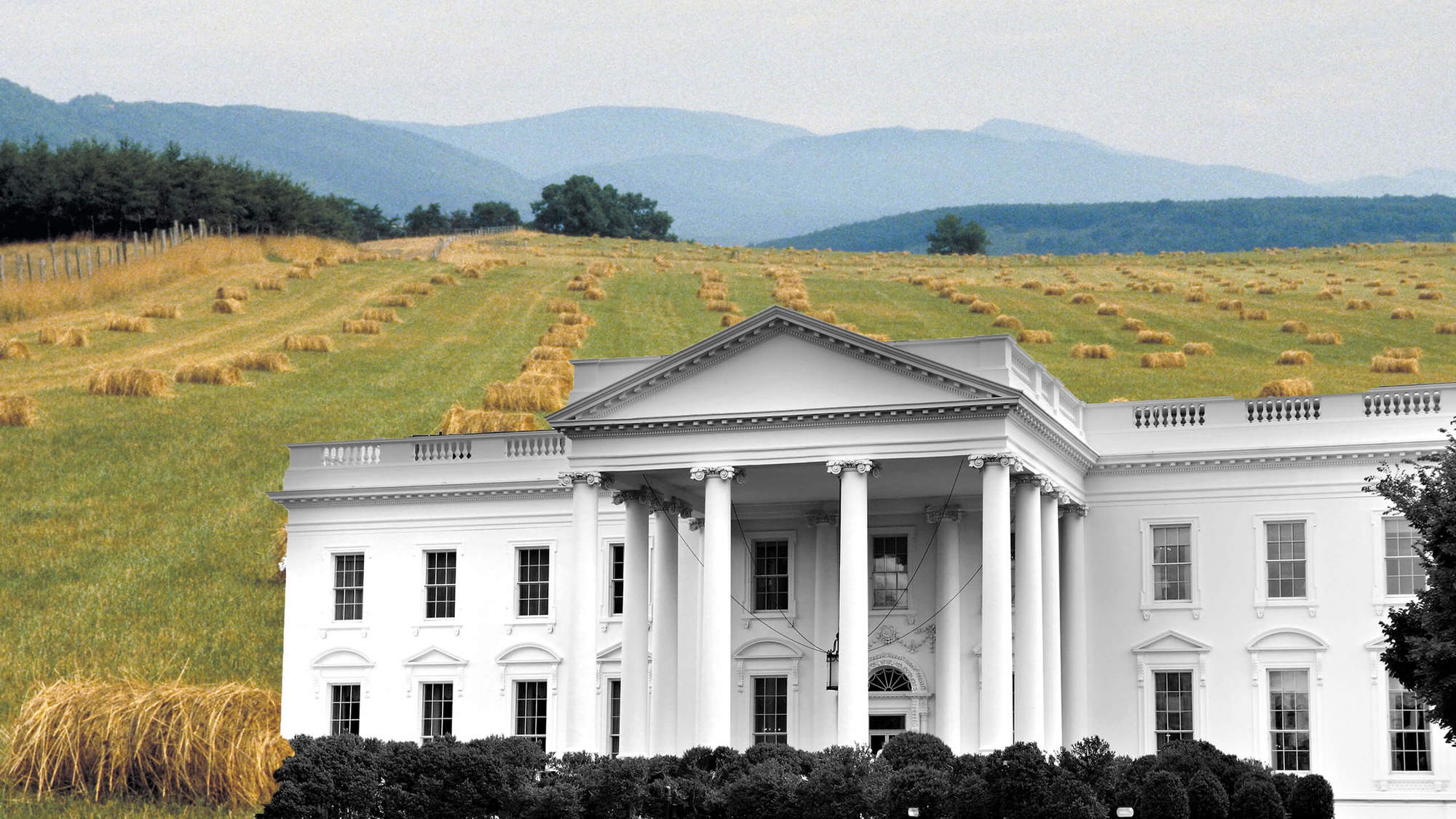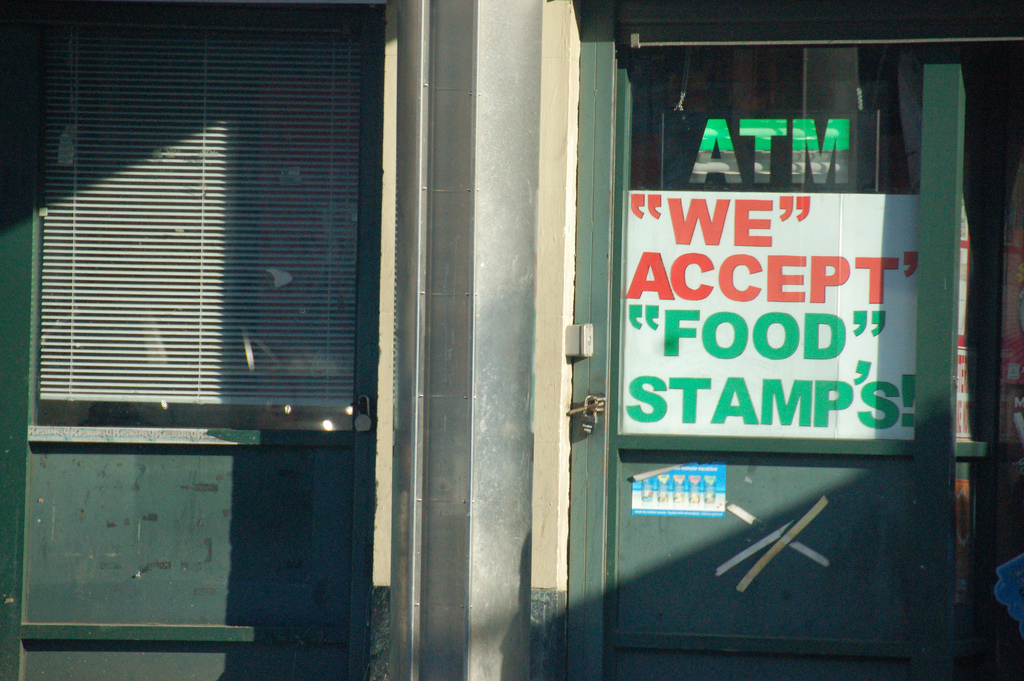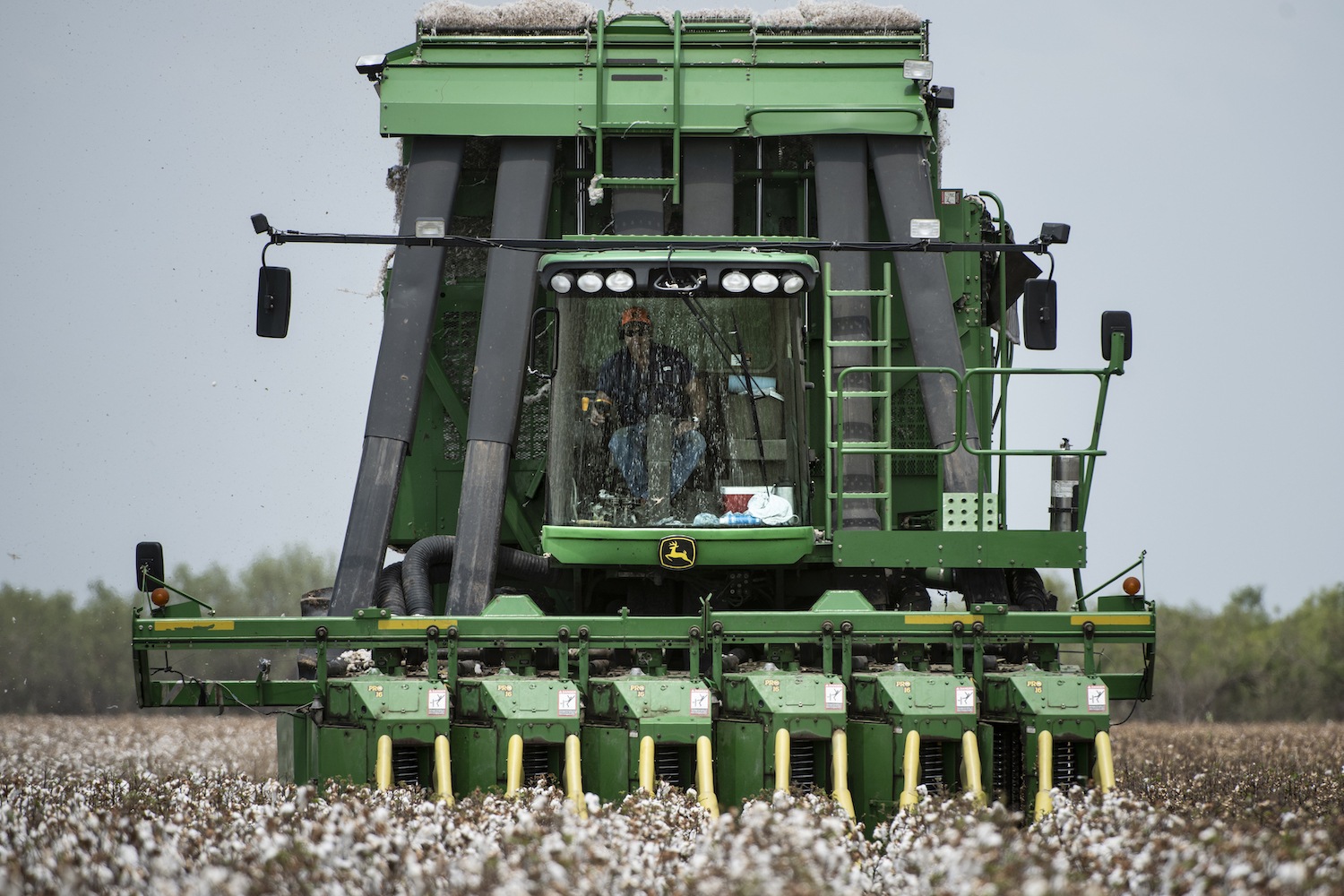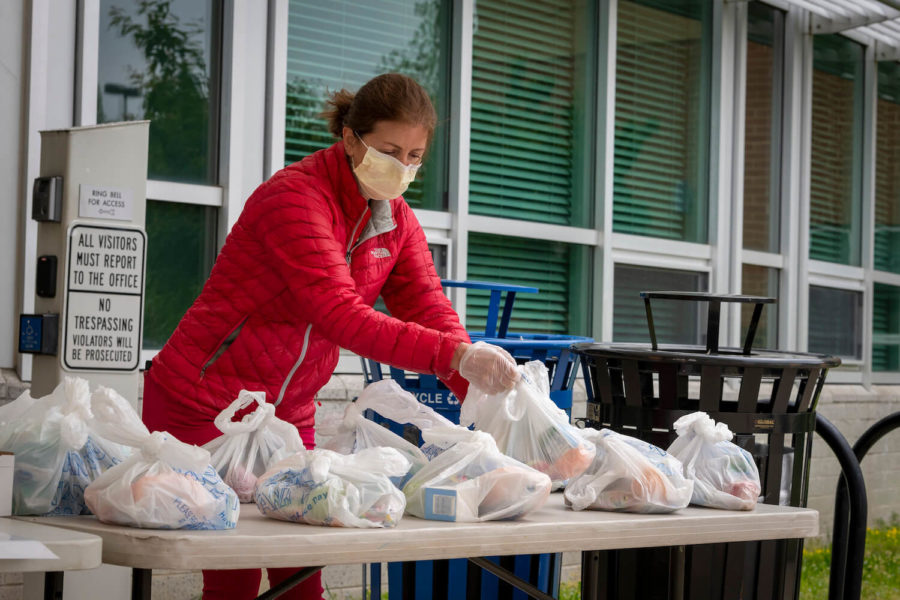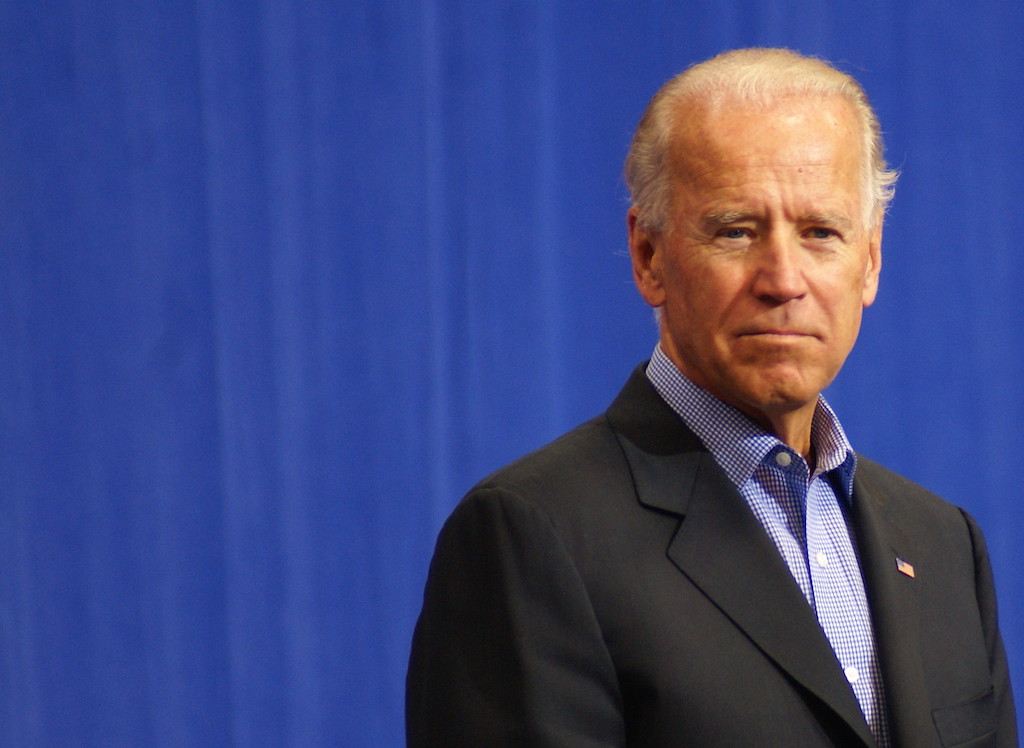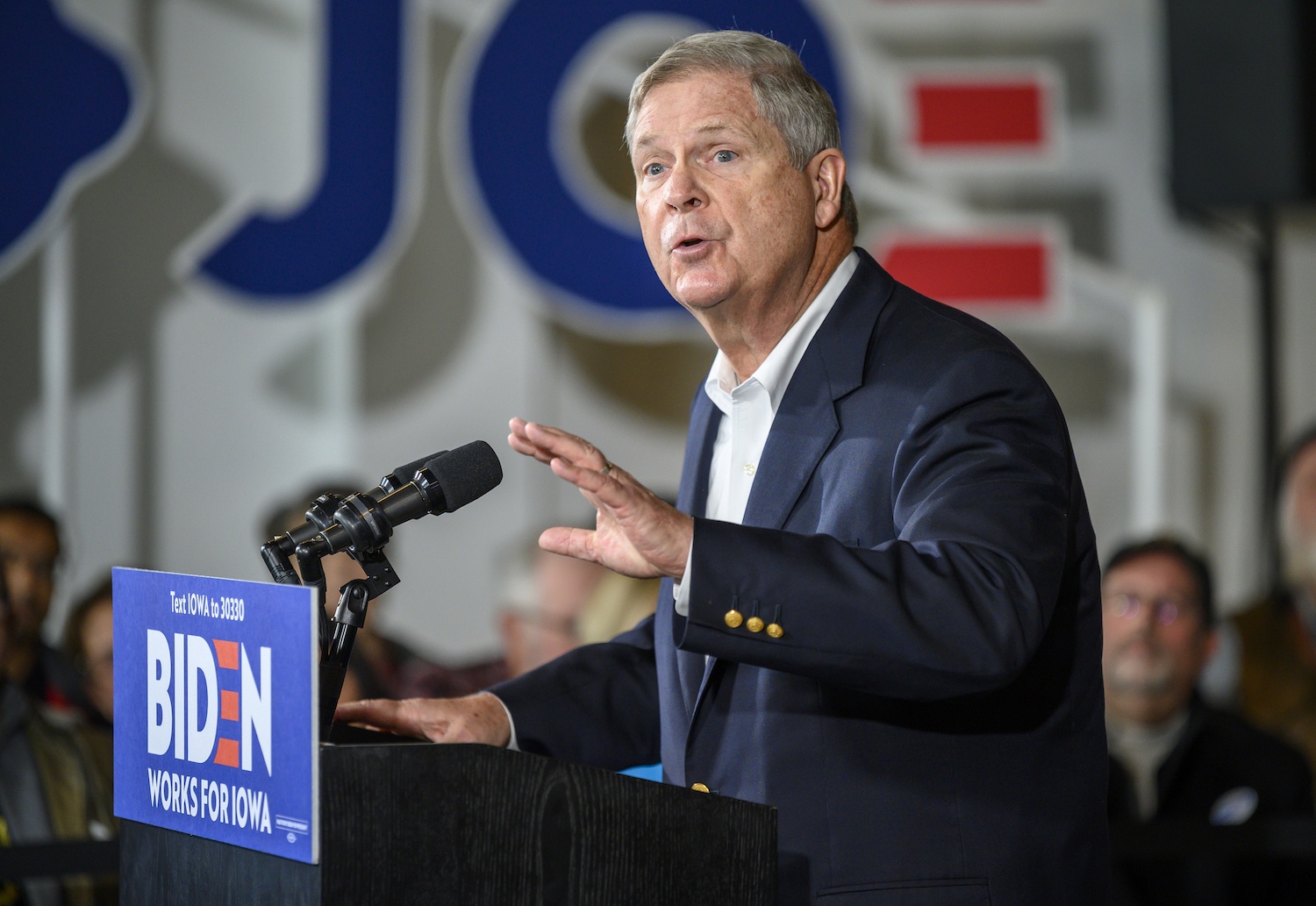
AP Photo/Justin Hayworth
The Counter’s look at Tom Vilsack’s two terms under Obama, his four years as a lobbyist, and why so many feel betrayed by the nomination.
When President Barack Obama nominated Tom Vilsack, a two-term Iowa governor, to be secretary of agriculture in 2008, Vilsack was seen as a centrist who wouldn’t change much about how farming was done in America—for better or worse.
Nominating Vilsack “seems like a solemn oath that [corn] subsidies will continue far into the future,” wrote Ezra Klein, then of The American Prospect. As governor, Vilsack supported policies to expand massive hog farms and caved on regulations to hem them in. “It’s hard to avoid the conclusion that this is agribusiness as usual,” Michael Pollan, author of The Omnivore’s Dilemma, told NPR.
The President framed Vilsack differently—as a forward-thinking farmers’ advocate who embraced new technology, like corn-based ethanol, that could enrich rural America. “Tom understands that the solution to our energy crisis will not be found in oilfields abroad, but in our farm fields here at home,” Obama said at his introductory press conference, praising Vilsack’s past efforts to promote biotech.
Fast forward to 2020, and Vilsack is poised to resume his role heading the U.S. Department of Agriculture (USDA) under President-elect Joe Biden, according to multiple outlets. This week, Vilsack emerged as a frontrunner ahead of two Democratic women: former North Dakota Sen. Heidi Heitkamp and Ohio Rep. Marcia Fudge, who would have been the first Black woman to lead the agency.
The prospect was greeted with tepid enthusiasm by some and outright ire among others. Many in the food world, possibly eager to find something to praise, pointed to his previous stint in the job as a net positive, and proof he could hit the job running. Yet for environmental advocates, Black farmers, food safety champions, and critics of corporate agribusiness, a return to the status quo feels inadequate.
“A crushing blow” to civil rights
For many advocates of racial justice in the food system, Vilsack’s nomination is an affront that suggests the Biden administration has little interest in making the ag sector more equitable and remedying USDA’s notorious history of racial discrimination against Black farmers.
Much of the disappointment stems from both the agency’s practices under Vilsack’s watch and his own reported reluctance to repair the damage of systemic racism. As The Counter reported in a 2019 investigation, employees alleged that Vilsack’s USDA repeatedly ran out the statute of limitations clock on discrimination complaints, while attempting to foreclose on farmers whose cases hadn’t yet been resolved. Employees also said that USDA manipulated Census data to obscure a decline in Black farming, which in turn allowed Vilsack to paint a rosy but inaccurate picture of his tenure.
“It’s incredibly disappointing—our people deserve better and America deserves better,” said Navina Khanna, executive director of the HEAL Food Alliance, a coalition that advocates for equity and sustainability in the food system. “It’s a signal that this administration doesn’t care about rural America, about Black America, about the millions of immigrants and migrants of color who work in the food system.”
One particular scandal during Vilsack’s tenure stands out right now: the controversial ouster of Shirley Sherrod, a Black USDA official. Vilsack forced Sherrod to resign after the far-right website Breitbart disseminated a selectively edited video to suggest that she had discriminated against a white farmer. (After the full video came to light, Vilsack apologized for his treatment of Sherrod and reportedly offered to resign over the incident.)
“It’s time for all appointments at every level of the cabinet to be people who clearly understand the importance of racial justice at this time and are actually going to work towards racial healing and reconciliation that this country so badly needs,” Khanna added. “Not people with this kind of past.”
[Subscribe to our 2x-weekly newsletter and never miss a story.]
For women who have experienced sexual abuse while working for USDA’s Forest Service—an agency that employees say fostered a decades-long culture of sexual harassment—Vilsack’s nomination is a punch to the gut, according to Lesa Donnelly, former employee and current vice president of the USDA Coalition of Minority Employees. Donnelly is a well-known advocate who has been calling on the agency to better protect employees from sexual abuse. According to her, Vilsack was part of the problem: He was “unwilling to investigate complaints properly and hold people accountable” during his tenure, Donnelly told news outlet Government Executive in 2016. The thought of his return to the agency is retraumatizing many of the women she advocates for, she told The Counter in an interview.
“It’s a signal that this administration doesn’t care about rural America, about Black America, about the millions of immigrants and migrants of color who work in the food system.”
“I would describe it as a crushing blow,” Donnelly said. “I had one woman call me and say, ‘This is a joke. Right? This is some kind of thing that people put out as a joke.’ I said, “No, no, unfortunately not.’ It is a feeling almost like being in a twilight zone, of being unable to suspend disbelief.”
Numerous other organizations, including those representing Black farmers, have vocally opposed Vilsack’s nomination.
“It’s very disappointing they even want to consider him coming back after what he has done to limited-resource farmers and what he continues to do to destroy lives,” Michael Stovall, founder of Independent Black Farmers, told Politico. And members of HEAL, including the National Black Food and Justice Alliance, have begun circulating a petition to stop Vilsack from moving forward.
Regardless of who ends up in the top ag spot, advocates want to see a Biden administration prioritize racial equity in food, including mandating health and safety protections for food workers—racial and ethnic minorities have been disproportionately impacted by Covid-19—and remedying Black land loss.
Climate and the environment aren’t Vilsack priorities
The Obama administration placed tough regulations on the energy and transportation industries in order to tackle climate change, but looked the other way when it came to food and farming. “For whatever reason … the administration chose not to confront one of the largest emitters of all: agriculture,” wrote Michael Pollan in 2016.
Indeed, rigorous environmental policies did not seem to be a priority for much of Vilsack’s term leading USDA. In one telling moment, then-Secretary Vilsack refused to take a stance on whether crop subsidies should be conditioned on farmers’ willingness to adopt basic conservation measures. “There were moments during his first tenure when Secretary Vilsack missed an opportunity to make the environment a priority,” said Scott Faber, vice president for governmental affairs at the Environmental Working Group, noting Vilsack’s unwillingness to challenge the status quo.
These aren’t the only Vilsack-supported policies that have raised eyebrows among environmentalists: He often boosted ethanol, a fuel additive that has long been unpopular with the green set because its production requires a lot of land and chemicals. He spent the past four years promoting dairy exports, indicating he’d be hesitant to back policies that curb production, such as limiting the construction of Concentrated Animal Feeding Operations (CAFOs). As recently as 2014, Vilsack appeared eager to shift the conversation about the climate crisis away from agriculture. At an event at Drake University, he said that “agriculture tends to take the brunt of criticism about climate change, but the industry contributes only 9 percent of the greenhouse gases blamed for a warming planet.”
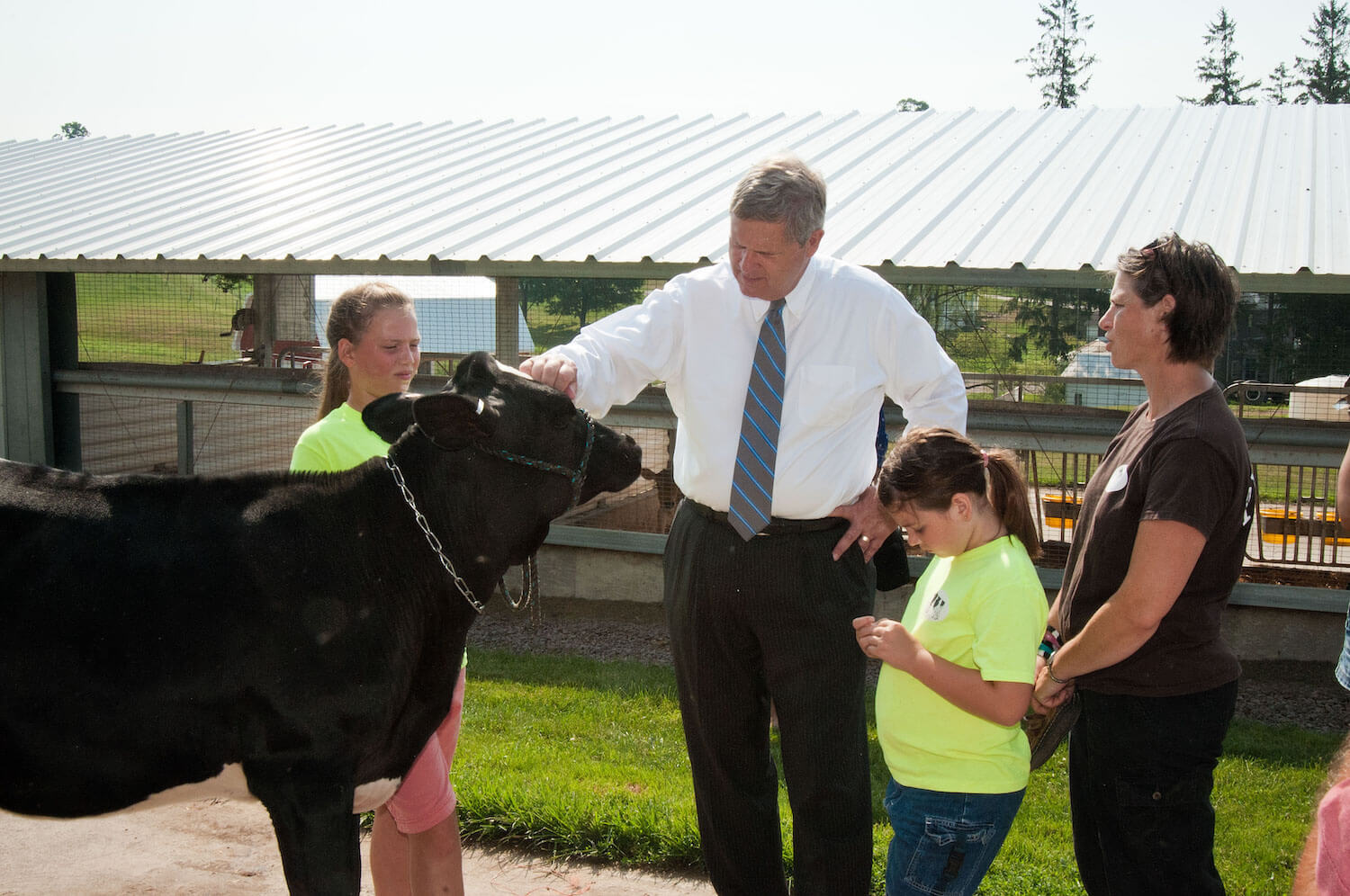
Vilsack spent the past four years promoting dairy exports, indicating he’d be hesitant to back policies that curb production, such as limiting the construction of Concentrated Animal Feeding Operations (CAFOs).
USDA/Bob Nichols
Yet farmer attitudes toward climate change have shifted in the past few years, perhaps cracking open a door for a secretary of agriculture to propose real change. “The sense of urgency around the climate crisis has never been greater, and farmers are not only seeing firsthand the effects of climate change, but are supporting measures to reduce emissions and store carbon underground,” Faber said. “The political climate is far better, even if the actual climate is far worse.”
As ag secretary, Vilsack would certainly have the resources to make a difference, even without action from Congress. He could tinker with existing crop subsidy and income-support programs, tying payments to climate-friendly farming practices. He could tap the Commodity Credit Corporation—a multibillion-dollar pot of money the Trump administration has used to blunt the impact of the president’s trade disputes—to establish a “carbon bank” and incentivize healthy soil practices. “I think that Vilsack has a lot of tools at his disposal, and a great deal will depend on who he surrounds himself with,” said Eric Deeble, policy director at the National Sustainable Agriculture Coalition.
Critics worry that USDA will focus exclusively on optional, incentives-based green farming policies—a strategy that’s had limited success thus far. Yet even if Vilsack introduces a sweeping set of climate initiatives on Day One, the success of green farm policies under a second Vilsack tenure will depend on the agency’s follow-through.
“It’s very important—essential—that USDA be vigorous and engaged, and that this not become a private-sector exercise, where carbon markets take over the conversation,” Deeble said. “We’ve got good programs at USDA right now that an ambitious secretary would be able to repurpose or modify slightly to get focused on climate change.”
On food safety, Vilsack “defaults to what the big companies want”
The Department of Agriculture doesn’t just regulate farmers. It’s also responsible for the safety of the meat, poultry, and eggs on our plates—roughly 20 percent of the American food supply. Consumer advocates contacted by The Counter say they don’t expect a Secretary Vilsack to do much more to keep that food clean and disease-free.
In his first tenure, Vilsack backed a proposal that would have allowed some chicken plants to dramatically increase line processing speeds from 140 birds per minute to 175. He also supported drastically reducing the number of USDA inspectors in plants, instead asking the companies to essentially police themselves.
Zach Corrigan, an attorney with Food & Water Watch, said those changes would have made it harder to spot dangerous defects like tumors before they end up in the public meat supply. Amid pressure from Corrigan’s group and others, Vilsack backed off those proposals.
“We’re very concerned about Vilsack’s past position on poultry and how that portends for market hogs and line speeds for poultry and beef plants as well.”
But in the years since, Trump’s USDA has picked up the baton. In 2019, the department published new rules to “modernize” pork slaughter and lift maximum processing speeds. And last month, the department presented a rule to the Office of Management and Budget to allow all chicken plants to operate at breakneck speeds. Officially, these are Trump-era rules, but Vilsack would have the power to overturn or choose not to implement them. Corrigan doesn’t expect that to happen.
“We’re very concerned about Vilsack’s past position on poultry and how that portends for market hogs and line speeds for poultry and beef plants as well,” Corrigan said.

It’s not just line speeds. When Vilsack was the head of USDA, his department rejected a petition to recognize some strains of antibiotic-resistant salmonella as adulterants, and make it illegal to process and sell meat and poultry that could sicken the public. A similar petition was submitted earlier this year—and Corrigan expects Vilsack, once again, to reject it.
Vilsack does have a record of limiting some dangerous bacteria in food. In 2011, he made it illegal for companies to sell ground beef containing “the big six” strains of e.coli, which cause thousands of illnesses every year. (Nine years later, the ban still hasn’t been fully implemented.)
Jaydee Hanson, a policy director for the Center for Food Safety, suspects Vilsack is unwilling to limit the transmission of the dangerous pathogen from other sources—namely, daily farms, which have been linked to e.coli outbreaks in lettuce. Theoretically, Hanson said, Vilsack could pass rules to limit where dairy farms could be located and ban them near vegetable crops. But that’s not likely to happen, Hanson said, because “Vilsack defaults to what the big companies want, in our opinion.”
Lack of support for small farms is “cause for concern”
Farm groups responded to Vilsack’s likely nomination with cautious optimism, noting the former secretary’s experience as a boon. “It is hard to argue with the fact that the USDA has been significantly eroded over the last four years in terms of research capacity and administrative capacity—it’s dropped down the rankings,” said Deeble of the National Sustainable Agriculture Coalition. “Getting somebody who knows where all the switches and levers are is valuable if you want to fix that.”
Yet there’s reason for skepticism. At the beginning of President Obama’s first term, Vilsack embarked on a long listening tour to hear from small-scale farms about the impact of corporate consolidation within agriculture. The tour left many hopeful that the administration would overhaul regulations in the meatpacking industry and shift some market power back to small producers. Many years later, the administration advanced a watered-down version of the rules, which were then rolled back by the Trump administration.
“Things have only gotten worse over the last four years—really a lot worse—so we need USDA to step in, and there’s concern because there was not a great deal of action over the last six years or so,” Deeble said.
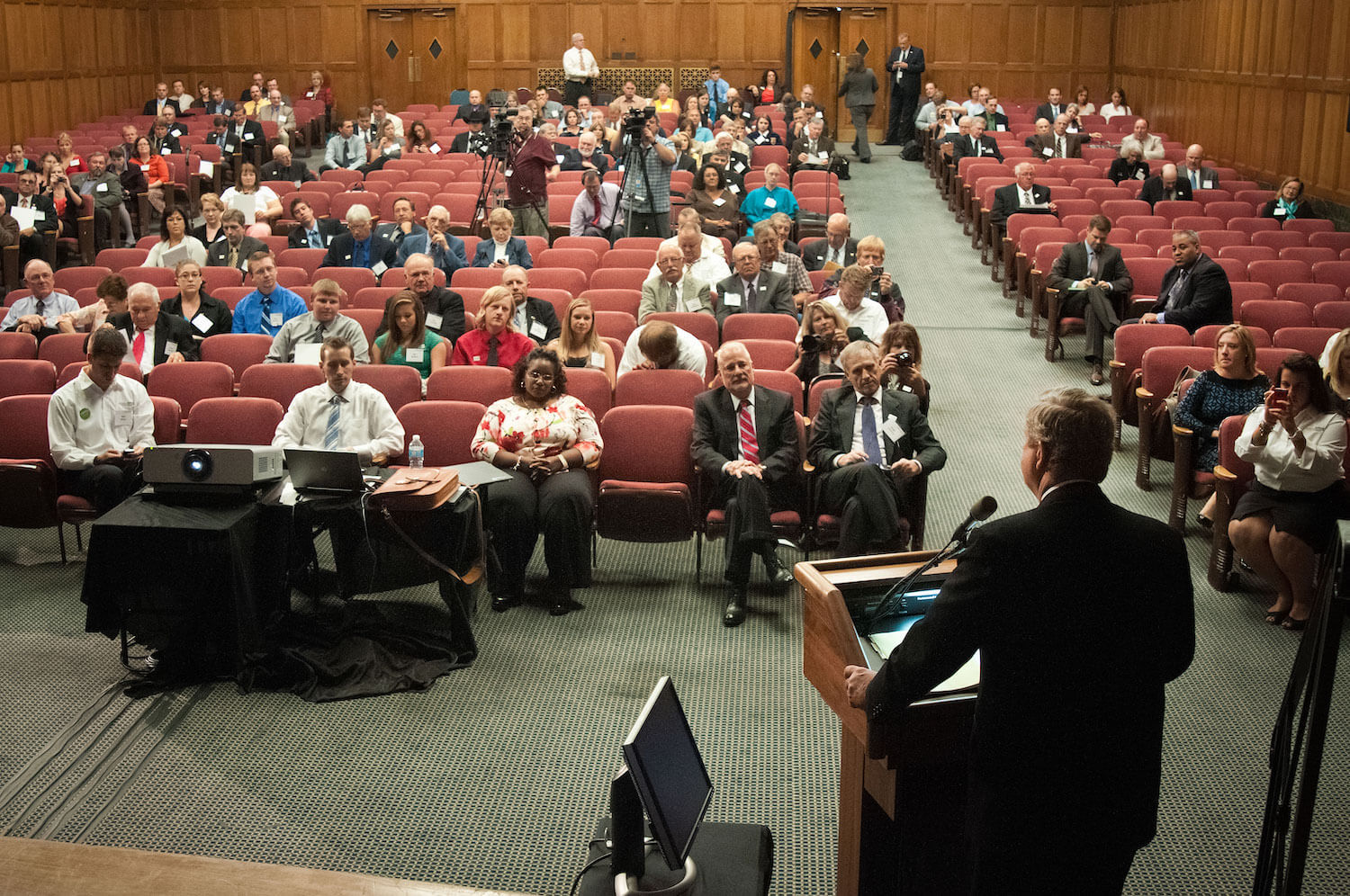
Agriculture Secretary Tom Vilsack addressed the National Farmers Union at the U.S. Department of Agriculture (USDA) in Washington, D.C. on Monday, Sept. 10, 2012. Secretary Vilsack discussed the economics of agriculture, conservation, exports, Rural America and the 2012 Farm Bill.
USDA/Bob Nichols
The experience left many farmers feeling that the Obama administration had retreated in the face of corporate opposition. Still, National Farmers Union’s vice president of advocacy Mike Stranz said he’s hopeful the incoming administration will be able to support small farms by stabilizing the ag economy and designing incentive-based programs to promote climate-friendly practices. “From all indications during the campaign, the rural platform, and discussions on the trail, President-elect Biden and Secretary Vilsack have said a lot of things that give us optimism,” Stanz said, adding that Vilsack was “very generous with his time” between 2008 and 2016.
It remains to be seen whether Vilsack will be open to considering supply management in the dairy industry, an idea that has been gaining traction among National Farmers Union members in recent years. This would mark a sea change in how the United States regulates dairy production: Instead of pushing producers to simply produce as much milk as possible, the agency could set limits on the total amount of dairy that can be produced. Hypothetically this could ensure that dairy farms would make enough money to break even. Supporters believe supply management would go a long way in saving small dairy farms, which have been filing for bankruptcy at a rapid clip.
Yet Vilsack spent the last four years as CEO for the U.S. Dairy Export Council, a group that represents some of the biggest dairy conglomerates which in turn hold a lot of sway over prices paid to small-scale farmers. Market control by the biggest player, critics argue, has been a contributing factor in the recent spate of small dairy failures. “Secretary Vilsack’s experience in the last four years does give us some cause for concern,” Stranz said. “But we also know, however, that as an administrator for a federal agency, he has the wherewithal and ability to work to advance policy goals that benefit farmers across the country.”
Vilsack represents a “huge conflict of interest” on antitrust issues
Some advocates hoped that the Biden administration would work to combat consolidation in agriculture and feel let down by Vilsack’s nomination. In particular, they take issue with his failure to prioritize policies that would have given farmers and ranchers more leverage with the industry’s meatpacking giants.
Take the Farmer Fair Practice rules—also known as the Grain Inspection, Packers, and Stockyards Administration (GIPSA) rules—for example. As antitrust law advocates see it, Vilsack’s USDA dilly-dallied over the rules for too long, and by eventually introducing them in the final months of the Obama administration, it all but guaranteed that they would get axed by Trump. These rules would have made it easier for contract farmers to sue processors—who dictate almost all the terms of raising livestock—over unfair retaliation, such as terminating contracts of farmers who attempt to organize.
“[Vilsack] had the opportunity to implement the Farmer Fair Practice rules that the Obama administration has set in place from day one and failed to get those across the finish line,” said Joe Maxwell, president and CEO of Family Farm Action, which advocates for reining in monopolies in agriculture. “There was not a better opportunity … to have put justice and peace back into the antitrust law that protects America’s farmers.”
“He can’t work for industry if he’s governing the industry.”
Vilsack also accumulated fresh baggage in the last four years as president and CEO of the U.S. Dairy Export Council, an organization tasked with generating overseas demand for U.S. milk and milk products. Vilsack has drawn heat for taking a nearly $1 million salary from his job, at a time when dairy farmers have struggled with low prices and bankruptcies.
It’s also important to note that the Export Council counts some of the largest dairy suppliers in the country among its members, including Dairy Farmers of America (DFA), the nation’s biggest milk processor and cooperative. DFA has been the subject of numerous lawsuits alleging antitrust violations and price-fixing practices, which many dairy farmers say have led to declining revenue and even driven some of them out of business. Now, they’re worried that Vilsack’s affiliation could pose a “huge” conflict of interest should he be confirmed as secretary of agriculture again.
“He can’t work for industry if he’s governing the industry,” said Gary Genske, a dairy farmer and California treasurer for the National Dairy Producers Organization, which advocates for supply management and higher dairy prices for farmers. “I can’t imagine that he would disrupt the profit flow of all these different ag commodity processors, because they’re the ones that hired him over the last four years.”
Hopefully he will “trust the scientists” on school lunch and child nutrition
Before Vilsack’s appointment was announced, Marcia Fudge, the Democratic Ohio congresswoman who chairs the House Subcommittee on Nutrition, was a likely candidate for agriculture secretary.
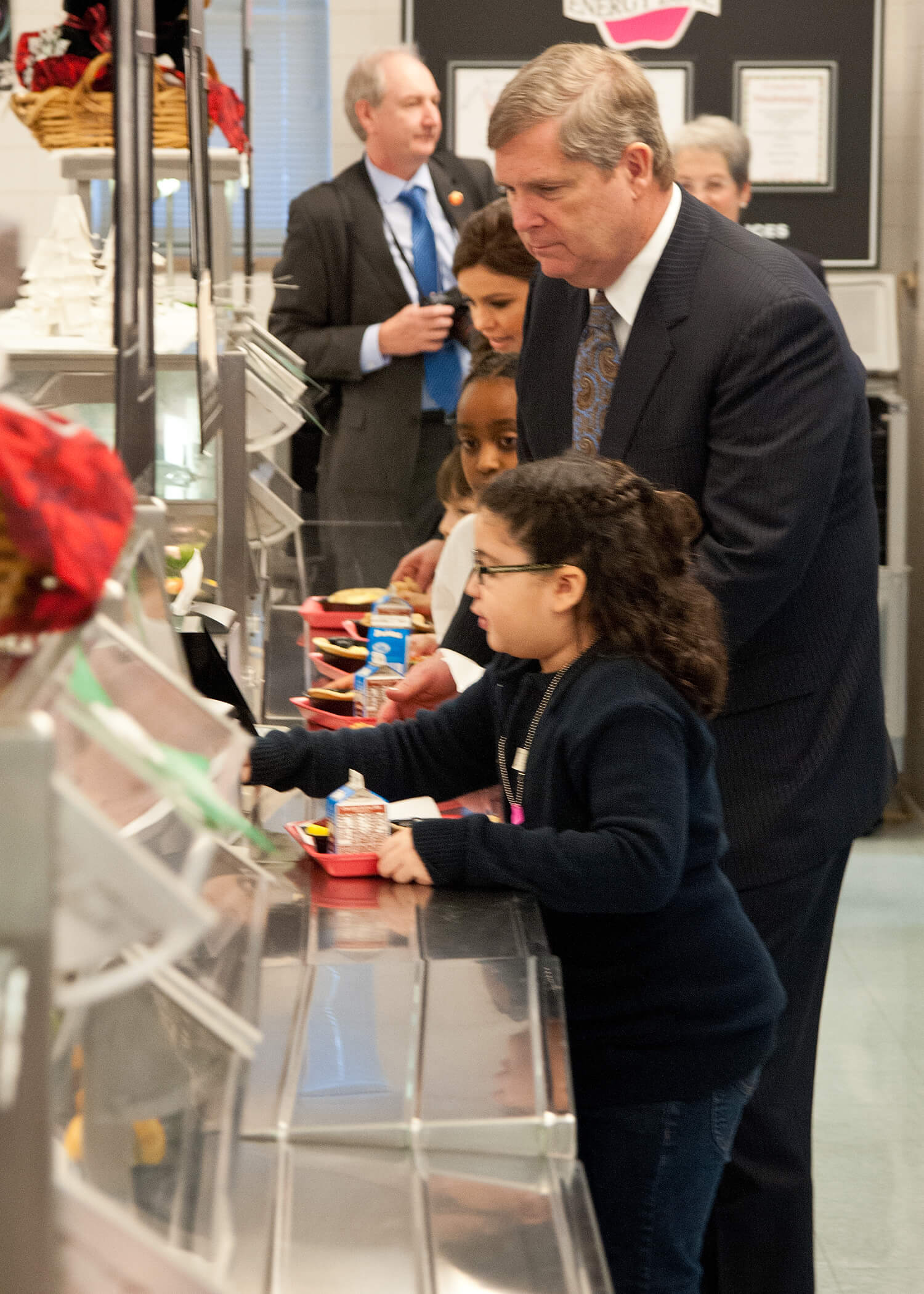
USDA/Bob Nichols
Under Vilsack’s watch, schools increased servings of whole grains, greens, and beans, and decreased refined grains, empty calories, and salt. Those reforms were controversial, and initially derided, but years later, they’ve had a measurable impact on child nutrition.
As Politico reported, Fudge had strongly fought against the Trump administration’s attempts to crack down on the Supplemental Nutrition Assistance Program (SNAP), which comprises the vast majority of the USDA budget. Could the new secretary, The New York Times queried, be one who emphasized “hunger and nutrition,” rather than the traditional farm policy issues that were only one part of the agency’s sprawling portfolio? In nominating Vilsack, it’s clear that the Biden administration is tilting towards the latter, not the former.
The agriculture department plays a significant role in developing federal nutrition standards—it once published the food pyramid (now, the food plate). It’s also the agency that publishes the Dietary Guidelines for Americans, which set national standards for healthy eating every five years. But the timing might not work out for Vilsack to have an impact on how those look because the latest round of guidelines will likely be released later this month, said Sarah Reinhardt, an analyst at the Union of Concerned Scientists.
Those guidelines could look pretty similar to what’s currently in place, Reinhardt said, although there could be new guidance to limit the amount of added sugars and alcohol that Americans consume. Vilsack, as agriculture secretary, would then have the power to align federal nutrition programs under his bailiwick with those standards.
“I would hope that he would stick with what the experts are recommending, and trust the scientists again.”
Certainly, he’s done that before—under President Obama, Vilsack shepherded through 2010 reforms to the $15-billion National School Lunch Program, which feeds some 30 million schoolchildren. Under his watch, schools increased servings of whole grains, greens, and beans, and decreased refined grains, empty calories, and salt. Those reforms were controversial, and initially derided, but years later, they’ve had a measurable impact on child nutrition.
Colin Schwartz, deputy director of legislative affairs at the Center for Science in the Public Interest (CSPI), expects a second-term Secretary Vilsack would preserve his legacy and overturn Trump-era rollbacks to the school lunch program. He’s hopeful that Vilsack may go further and pass restrictions on added sugars, which are long desired by CSPI and other public health groups. Vilsack would also have the power to strengthen the weaker nutritional standards of free summer meals.
“I would hope that he would stick with what the experts are recommending, and trust the scientists again,” when it comes to what kids are eating, Schwartz said.
—
Ultimately, Vilsack’s record as agriculture secretary was spotty. He missed opportunities to prioritize environmental policies and backed off on reigning in monopolies in the meat industry. And his record on civil rights has only worsened since he left office, amid a steady trickle of revelations about his treatment of Black farmers and victims of sexual harassment. These failures have left deep scars—scars that are dealbreakers for some and, at minimum, caution flags for others.
Yet the most optimistic experts we spoke to stressed the vast changes in the political landscape since 2016. Farmers are more accepting of climate change and more willing to take part in mitigating its impacts. The pandemic has brought inequities among farm workers and the concentration of meat industry power into the public eye. The USDA has been subject to intense scrutiny over the last four years, scrutiny that is not likely to let up if Vilsack coasts into office (a conclusion many see as inevitable).
In 2015, then-Secretary Vilsack attempted to resign his post, telling former President Obama he did not have enough on his plate. This time around, it appears he’ll have plenty.
